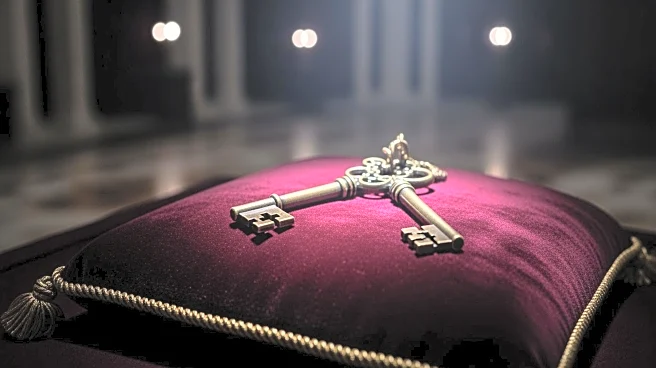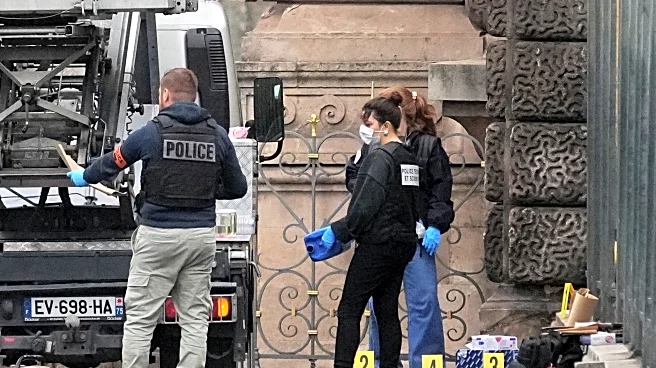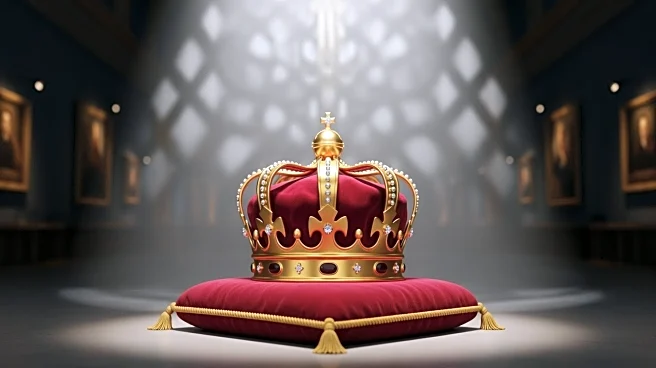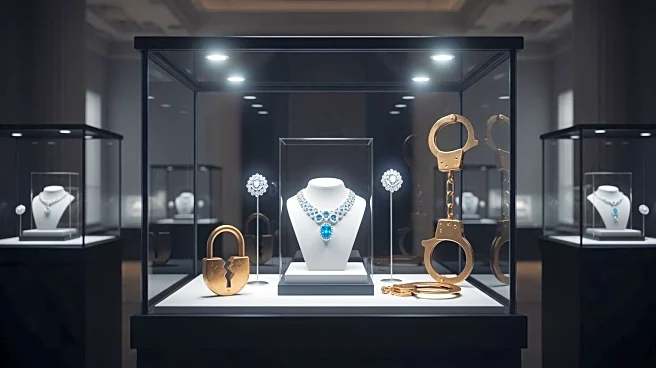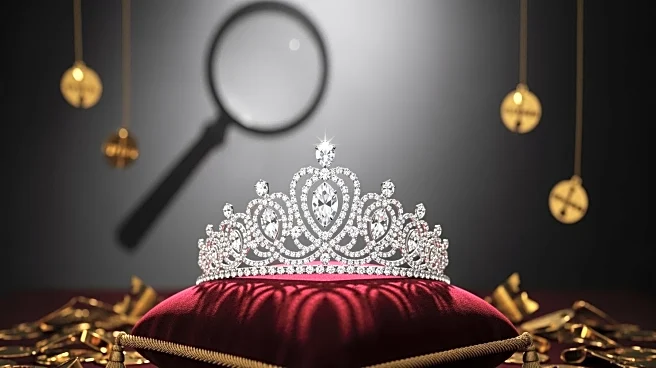What's Happening?
Two suspects have partially admitted their involvement in the recent heist at the Louvre Museum, where jewels valued at $102 million were stolen. The theft occurred on October 19, 2025, when thieves used
a stolen vehicle-mounted mechanical lift to access the Galerie d'Apollon and cut open display cases with a disc cutter. The suspects, both in their thirties, were identified through DNA evidence and have criminal records. One was arrested while attempting to board a flight to Algeria. The stolen jewels, including a crown belonging to Empress Eugenie, remain missing. Paris prosecutor Laure Beccuau has not ruled out the involvement of additional suspects beyond the four caught on CCTV.
Why It's Important?
The heist at the Louvre, one of the world's most visited museums, highlights significant security vulnerabilities in protecting national treasures. The theft of such high-value items not only represents a substantial financial loss but also a cultural one, as these jewels are part of France's heritage. The incident raises concerns about museum security protocols and the potential for similar crimes. The ongoing investigation and the possibility of more suspects being involved suggest a complex criminal network, which could have broader implications for international art theft and trafficking.
What's Next?
Authorities are under pressure to recover the stolen jewels and apprehend any additional suspects involved. The premature disclosure of information related to the case has been criticized for hindering recovery efforts. The investigation will likely continue to focus on identifying and capturing all individuals involved, including those who may have planned to receive the stolen items. The Louvre may also face scrutiny and potential reforms in its security measures to prevent future incidents.






